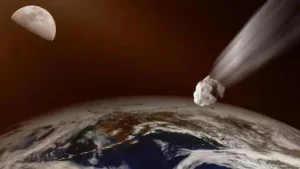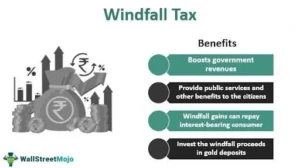UPSC GS 2
One Nation, One Election
- News: The Narendra Modi government has approved the report from a high-level panel led by former President Ram Nath Kovind on the concept of ‘One Nation, One Election’ (ONOE).
- Definition:
-
- The concept revolves around conducting simultaneous elections for both Lok Sabha and State Assemblies throughout the country. This would mean that the voters will cast their vote for electing members of the Lok Sabha and the State Assemblies on a single day.
- Currently, elections for state assemblies and the Lok Sabha take place independently, either upon the completion of a five-year term for the existing government or in the case of dissolution due to various reasons.
-
- History:
-
- The first general elections to Lok Sabha and all State Legislative Assemblies were held together in 1951-52. That practice continued over three subsequent general elections held in the years – 1957, 1962 and 1967.
- However, due to the premature dissolution of some Legislative Assemblies in 1968 and 1969, the cycle got disrupted for the first time.
- After 1967, elections to State Assemblies and Parliament have been held separately.
-
- How can it be Implemented?
-
- Implementing ‘One Nation, One Election’ would require an amendment to the Constitution, which must be ratified by the governments of all states and union territories, as well as potentially by major political parties.
- Article 83 deals with the term of Parliament, Article 85 discusses the dissolution of Lok Sabha by the President, Article 172 covers the duration of state legislatures, Article 174 addresses the dissolution of state legislatures, and Article 356 pertains to the imposition of President’s Rule.
-
- Various Reports:
-
- Law commissions, including the 107th report in 1999 and the 22nd Law Commission in 2018, have advocated for the restoration of simultaneous polls.
-
- Poll Panel’s 2015 Report:
-
- Nine years ago, the Election Commission of India (ECI) submitted a feasibility report on the ‘One Nation, One Election’ concept.
- In this report, it proposed that if a no-confidence motion were to pass, the process should include the nomination of a new Chief Minister or Prime Minister to take over immediately, requiring the new leader to face a confidence vote right away.
- In the event of early dissolution of a government, the report recommended holding a short-term election solely to establish a government for the remainder of the term.
- Several measures were proposed, including the extension or shortening of terms to help synchronise electoral cycles.
-
Read also: Wayanad Landslide: Kerala’s Deadliest Landslide | UPSC
Credit Guarantee Trust for Micro and Small Enterprises (CGTMSE) Scheme
- News: Women-owned micro and small enterprises will get enhanced credit guarantee coverage of 90 per cent under the CGTMSE scheme, after its board approved the new guidelines recently.
- Introduction: The Ministry of Micro, Small & Medium Enterprises (M/o MSME) launched the Credit Guarantee Scheme for Micro & Small Enterprises (MSEs) in 2000.
- Objective:
-
- To catalyze institutional credit flow to MSEs, particularly for unserved and underserved segments.
- The scheme was formally launched on August 30, 2000, and became operational on January 1, 2000.
-
- Purpose:
-
- The scheme is designed to facilitate access to credit for MSEs, especially for new-generation entrepreneurs and underprivileged groups who lack collateral security or third-party guarantees.
- It aims to make institutional credit available from traditional lenders to MSEs in the MSME sector.
-
- Establishment of CGTMSE: CGTMSE was jointly set up by the Ministry of MSME and the Small Industries Development Bank of India (SIDBI) to implement the Credit Guarantee Scheme.
- Funding: The corpus of CGTMSE is contributed in a 4:1 ratio by the Government of India and SIDBI.
- Eligible Lending Institutions:
-
- Scheduled commercial banks (Public Sector, Private Sector, and Foreign Banks).
- Select Regional Rural Banks (classified as ‘Sustainable Viable’ by NABARD).
- National Small Industries Corporation Ltd. (NSIC), North Eastern Development Finance Corporation Ltd. (NEDFi), SIDBI, selected Small Finance Banks, and NBFCs.
-
- Eligible Credit Facility: CGTMSE provides collateral-free credit support up to ₹5 crores to MSEs through its Member Lending Institutions.
- Guarantee Cover:
-
- 85% for micro-enterprises for credit up to ₹5 lakhs.
- 75% for credit between ₹5 lakhs and ₹500 lakhs.
- 80% for loans up to ₹50 lakhs in the North East Region (including Sikkim, UT of Jammu & Kashmir, and UT of Ladakh). For loans above ₹50 lakhs, cover is 75%.
- 85% for MSMEs owned by SC/ST entrepreneurs, Persons with Disabilities (PwDs), MSEs in Aspirational Districts, ZED certified MSEs, and MSEs promoted by Agniveers.
- 90% for MSMEs owned or operated by women.
- 75% for all other categories of borrowers.
-
- Default and Claim Settlement: In the event of a default, CGTMSE settles the claim up to 75% (or 85%/80% where applicable) of the defaulted credit facility extended by the lending institution.
Indus Water Treaty
- News: India has sent a formal notice to Pakistan, this time seeking the “review and modification” of the Indus Water Treaty.
- Introduction:
-
- The treaty between India and Pakistan was signed on September 19, 1960, for the use of water available in the Indus and its tributaries.
- It was signed in Karachi by then Prime Minister Jawaharlal Nehru and then Pakistan President Mohammed Ayub Khan after nine years of negotiations arranged by the World Bank.
-
- History Behind the Indus Water Treaty:
-
- Pre-Independence: Before partition, the six rivers of the Indus basin—Indus, Sutlej, Beas, Ravi, Jhelum, and Chenab—originated in the Himalayas/Tibet and formed a common river network for both India and Pakistan.
- At the Time of Partition: Partition raised concerns about water distribution between India and Pakistan, with Pakistan feeling vulnerable due to India’s upstream control of the rivers.
- Inter-Dominion Accord (May 4, 1948): The Inter-Dominion accord was signed on May 4, 1948, where India agreed to release water to Pakistan in exchange for annual payments. However, this arrangement soon proved unsatisfactory, leading to the search for a more permanent solution
-
- Main Provisions of the Indus Water Treaty:
-
- Eastern Rivers Allocation to India: The treaty allocated exclusive rights over three eastern rivers—Ravi, Sutlej, and Beas—to India, with a mean annual flow of 33 Million Acre-feet (MAF).
- Western Rivers Allocation to Pakistan: Pakistan gained control of three western rivers—Chenab, Indus, and Jhelum—with a mean annual flow of 80 MAF.
- Water Utilization by India from Western Rivers: The treaty permits India limited use of western rivers, including:
- Irrigation: Limited use for agricultural purposes.
- Non-consumptive Uses: Activities such as power generation and navigation.
- Hydroelectricity Projects: India is allowed to generate hydroelectricity via run-of-the-river projects, without storing water, subject to specific operational criteria.
- Water Storage: India is permitted to store up to 3.75 MAF for conservation and flood control purposes.
- Water Division Ratio: Under the treaty, India receives 20% of the water from the Indus River system, while Pakistan gets 80%.
-
- Dispute Resolution Mechanism: The Indus Water Treaty offers a three-step process to resolve disputes between India and Pakistan:
-
- Permanent Commission: Issues can be raised and potentially resolved at the Permanent Indus Commission or escalated to the inter-governmental level.
- Neutral Expert (NE): For unresolved technical differences, either party may request the World Bank to appoint a Neutral Expert to make a decision.
- Court of Arbitration: If the Neutral Expert’s decision is unsatisfactory, or in case of disputes over treaty interpretation, the matter can be referred to a Court of Arbitration.
-
UPSC GS 3
Mini-moons
- News: Earth is set to witness a ‘mini-moon’ called 2024 PT5, a small asteroid that will not collide with Earth but will orbit around it, similar to the Moon, for a brief period of around two months soon.
- What is a ‘mini-moon’?
-
- Earth can periodically capture asteroids from the Near-Earth Object (NEO) population, pulling them into orbit and turning them into ‘mini-moons’.
- NASA considers any space object within about 120 million miles (190 million kilometres) of Earth as a “near-Earth object” and classifies larger objects within 4.7 million miles (7.5 million kilometres) as “potentially hazardous”.
- Mini moons asteroids are small and often difficult to detect.
- Earth has only had four mini-moons discovered so far, and none are currently still in orbit.
- Mini-moons that complete a full orbit are known as “temporarily captured orbiters”.
- In some cases, objects mistaken for mini-moons have been space debris, like the Gaia spacecraft or rocket stages from the Chang’e 2 and Lunar Prospector missions.
-

- 2024 PT5:
-
- 2024 PT5 is a small asteroid, about 33 feet long, which was discovered on August 7, 2024, by scientists using NASA’s Asteroid Terrestrial-impact Last Alert System (ATLAS).
- It is too small to be visible to the naked eye or even through typical amateur telescopes but can be observed with professional astronomical equipment.
- The asteroid originates from the Arjuna asteroid belt, which consists of space rocks that have orbits similar to Earth’s.
- It will orbit Earth from September 29 to November 25 before breaking free from the planet’s gravitational pull.
- Astronomers refer to it as a “temporarily captured flyby” since it won’t complete a full orbit.
- Due to its orbit being similar to Earth’s, calculations show that the asteroid will return to orbit Earth in January 2025 and again in 2055.
-
- Why is this significant?
-
- The temporary capture of 2024 PT5 provides an opportunity for scientists to better understand asteroids that pass close to Earth, which is important for studying potential impacts.
- Additionally, these observations contribute to research on asteroids, many of which contain valuable resources such as minerals and water, which could be used for purposes like rocket fuel in the future.
-
Windfall Tax
- News: The government recently slashed windfall tax on domestically produced crude oil to ‘nil’ per tonne.
- Definition:
-
- A windfall tax is a higher tax imposed on specific industries when they make unusual and above-average profits.
- The term “windfall” refers to an unexpected rise in profits, and the tax on such gains is termed as windfall tax.
- These profits arise not due to any business expansion or investment but due to favorable external factors beyond the company’s control.
-

- Industries Targeted:
-
- Windfall taxes are typically levied on industries that benefit from unexpected circumstances such as commodity shortages, wars, pandemics, or government policy changes.
- Common industries that fall under windfall tax include oil, gas, and mining.
- In some cases, individual taxes like inheritance tax or taxes on lottery winnings may also be considered as a form of windfall tax.
-
- Objective of Windfall Taxes:
-
- The primary goal of windfall taxes is to appropriate a portion of extraordinary profits for the public good, which are considered to exceed normal business returns.
- Governments justify these taxes by arguing that such profits are due to external factors and not solely the taxed entity’s efforts.
- Windfall taxes are also used as a supplementary revenue stream for governments to benefit society as a whole.
-
Read also: Indus Water Treaty: History, Provisions, Concerns, and Way Forward
Necrotising Fasciitis
- News: A British man narrowly escaped death after a minor spider bite led to a life-threatening condition called Necrotising fasciitis.
- Definition:
-
- Necrotising fasciitis, commonly known as the flesh-eating disease, is a rare and serious bacterial infection that attacks the fascia (tissue beneath the skin).
- Necrotizing refers to tissue death, while fasciitis indicates inflammation of the fascia.
-
- Types:
-
- Type I (Polymicrobial): Caused by a mix of aerobic and anaerobic bacteria.
- Type II (Monomicrobial): Typically caused by one bacteria, such as group A streptococcus or Staphylococcus aureus.
-
- Causes: The infection can enter the body through:
-
- Cuts and scratches
- Burns and scalds
- Insect bites
- Surgery
- Drug injections
- Necrotising fasciitis is a form of necrotizing soft tissue infection (NSTI), which affects the skin, muscles, and soft tissues.
-

- Infection Mechanism:
-
- The infection spreads rapidly along the fascial plane, which has a poor blood supply, leaving the overlying tissues initially unaffected.
- This can delay diagnosis and treatment, while the infection spreads aggressively.
-
- Symptoms: Discolored skin, swelling of affected tissues, unstable blood flow, Blisters filled with bloody or yellowish fluid, Tissue death (necrosis), Low blood pressure, Sepsis, etc.
- Treatment:
-
- No vaccine is currently available to prevent necrotizing fasciitis.
- Treatment involves antibiotics and surgical removal of damaged tissue.
-

